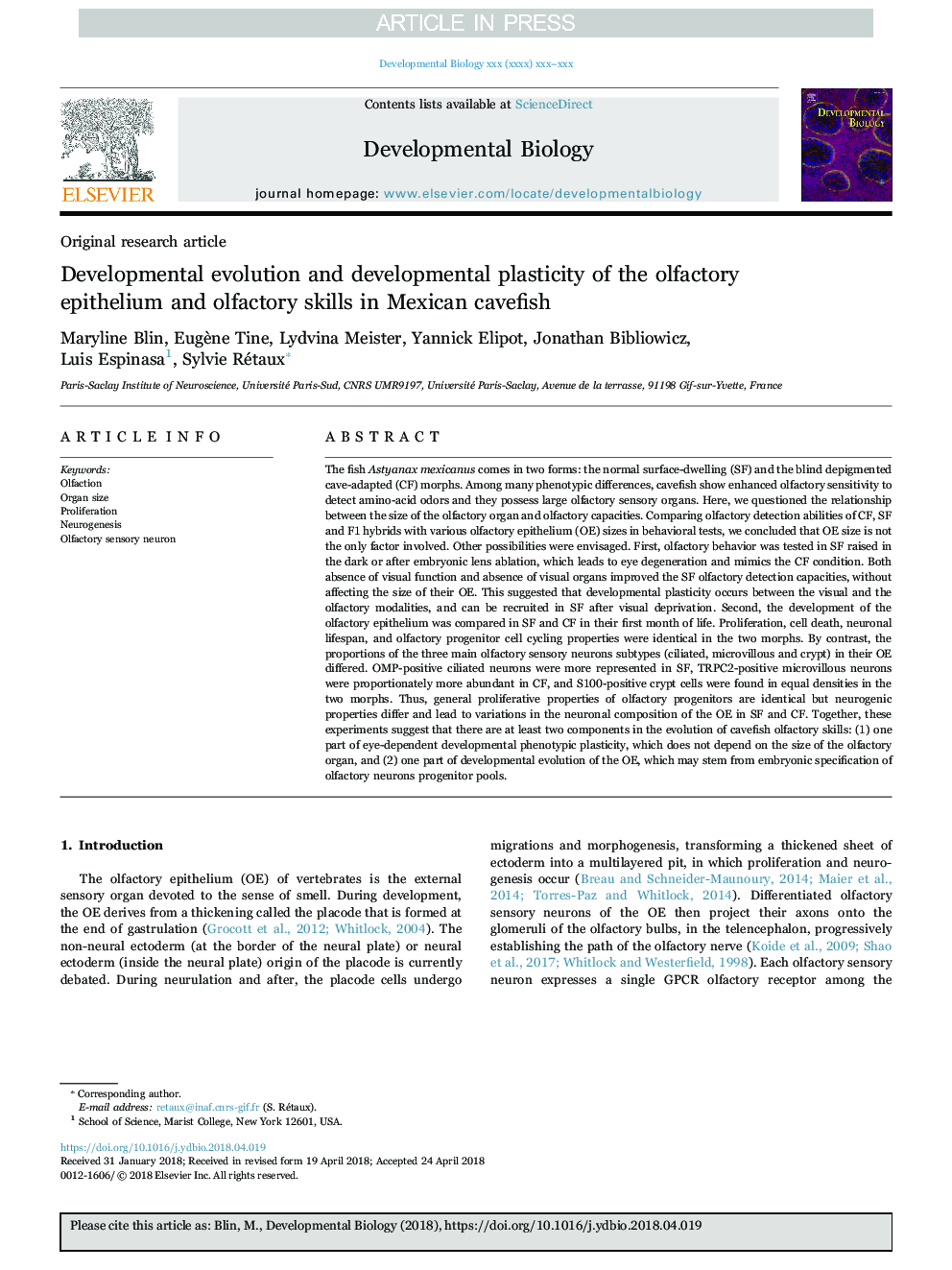| کد مقاله | کد نشریه | سال انتشار | مقاله انگلیسی | نسخه تمام متن |
|---|---|---|---|---|
| 8956279 | 1646143 | 2018 | 10 صفحه PDF | دانلود رایگان |
عنوان انگلیسی مقاله ISI
Developmental evolution and developmental plasticity of the olfactory epithelium and olfactory skills in Mexican cavefish
ترجمه فارسی عنوان
تکامل تکاملی و تکامل تکاملی اپیتلیوم بویایی و مهارت بویایی در ماهیگیری ماهیگیری مکزیکی
دانلود مقاله + سفارش ترجمه
دانلود مقاله ISI انگلیسی
رایگان برای ایرانیان
کلمات کلیدی
پرخاشگری، اندازه ارگ، ترویج نوروژنز، عصب حساس رحمی،
موضوعات مرتبط
علوم زیستی و بیوفناوری
بیوشیمی، ژنتیک و زیست شناسی مولکولی
بیولوژی سلول
چکیده انگلیسی
The fish Astyanax mexicanus comes in two forms: the normal surface-dwelling (SF) and the blind depigmented cave-adapted (CF) morphs. Among many phenotypic differences, cavefish show enhanced olfactory sensitivity to detect amino-acid odors and they possess large olfactory sensory organs. Here, we questioned the relationship between the size of the olfactory organ and olfactory capacities. Comparing olfactory detection abilities of CF, SF and F1 hybrids with various olfactory epithelium (OE) sizes in behavioral tests, we concluded that OE size is not the only factor involved. Other possibilities were envisaged. First, olfactory behavior was tested in SF raised in the dark or after embryonic lens ablation, which leads to eye degeneration and mimics the CF condition. Both absence of visual function and absence of visual organs improved the SF olfactory detection capacities, without affecting the size of their OE. This suggested that developmental plasticity occurs between the visual and the olfactory modalities, and can be recruited in SF after visual deprivation. Second, the development of the olfactory epithelium was compared in SF and CF in their first month of life. Proliferation, cell death, neuronal lifespan, and olfactory progenitor cell cycling properties were identical in the two morphs. By contrast, the proportions of the three main olfactory sensory neurons subtypes (ciliated, microvillous and crypt) in their OE differed. OMP-positive ciliated neurons were more represented in SF, TRPC2-positive microvillous neurons were proportionately more abundant in CF, and S100-positive crypt cells were found in equal densities in the two morphs. Thus, general proliferative properties of olfactory progenitors are identical but neurogenic properties differ and lead to variations in the neuronal composition of the OE in SF and CF. Together, these experiments suggest that there are at least two components in the evolution of cavefish olfactory skills: (1) one part of eye-dependent developmental phenotypic plasticity, which does not depend on the size of the olfactory organ, and (2) one part of developmental evolution of the OE, which may stem from embryonic specification of olfactory neurons progenitor pools.
ناشر
Database: Elsevier - ScienceDirect (ساینس دایرکت)
Journal: Developmental Biology - Volume 441, Issue 2, 15 September 2018, Pages 242-251
Journal: Developmental Biology - Volume 441, Issue 2, 15 September 2018, Pages 242-251
نویسندگان
Maryline Blin, Eugène Tine, Lydvina Meister, Yannick Elipot, Jonathan Bibliowicz, Luis Espinasa, Sylvie Rétaux,
